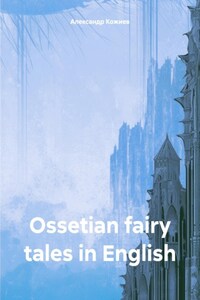Reading rules
A brief table to read the Ossetian proper names and terms used in this book.
Alphabet
Oss. alph. letter
Correspondence in the English alphabet (or explanation)
Correspondence in the French alphabet (or explanation)
كلمة مكافئة في اللغة العربية
А а
A a, like ar in far in English
A a
آ
Æ æ
Æ æ
is pronounced like the English accentless “a”, as in the words above, amount, aside. It retains this pronunciation even under accent. In contrast to the open clear “a” it can be pronounced as “a” “through the teeth”.
It is important to distinguish between a and æ:
dar – keep; dær – even, too
dum – say, say; dæm – you have
Æ æ
أ
Б б
B b
B b
ب
В в
V v
V v
ڤ / ف
Г г
G g
like g in go
G g
ج بالمصير، أو گ باللهجة العراقية
Гъ гъ
Gh gh
The gh sound is a phonatory correspondence of the deaf h. It is close to Tajik ғ, French r
Gh gh
Le son gh est une correspondance phonatoire du h sourd. Il est proche du tadjik ғ, du français r
غ
Д д
D d
D d
د
Дж дж
J j
J j
ج
Дз дз
Dz dz
Dz dz
دْز
Е е
Ye ye (like in the word “Yes”)
Ye ye
يَ
Ё ё
Yo yo
Yo yo
يو
Ж ж
Zh zh
like s in pleasure
Zh zh
ج مثل ج باللهجة المغريبية
З з
Z z
Z z
ز
И и
I i (Y y)
I i (Y y)
ي
Й й
Y y
Y y
ئ
К к
K k
K k
ك
Къ къ
K’ k’
to pronounce k’, you should try to pronounce the sound k, but abruptly interrupt, as if firing the sound. In this case, the air is not released, as when pronouncing “k”
K’ k’
pour prononcer “k”, il faut essayer de prononcer le son k, mais l'interrompre brusquement, comme si l'on tirait sur le son. Dans ce cas, l'air n'est pas relâché, comme lors de la prononciation du “k”
ﯖ
Л л
L l (always a harsh sound)
L l (toujours un son dur)
ل (صوت قوي دائمًا)
М м
M m
M m
م
Н н
N n
N n
ن
О о
O o
O o
او
П п
P p
P p
پ
Пъ пъ
P’ p’
when pronouncing p’, the larynx closes for a while, and the explosion is carried out by the air supply that was in the supraglottic region
P’ p’
lors de la prononciation de p’, le larynx se ferme pendant un moment et l'explosion est réalisée par la réserve d'air qui se trouvait dans la région supraglottique
ڥ
Р р
R r
Like the solid sound r in Spanish, Italian, Russian
R r
Comme le son solide r en espagnol, italien, russe
ر
С с
S s
S s
س
Т т
T t
T t
ت
Тъ тъ
T’ t’
during pronunciation, the larynx closes for a while, and the explosion is carried out by the air supply that was in the supraglottic region
T’ t’
lors de la prononciation, le larynx se ferme pendant un certain temps et l'explosion est réalisée par la réserve d'air qui se trouvait dans la région supraglottique.






